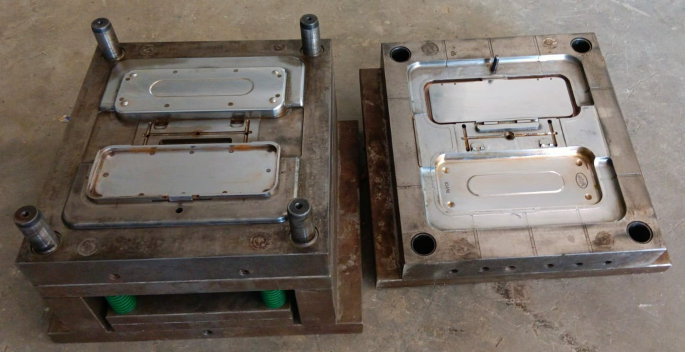Plastic Injection Molding: A Comprehensive Guide to the Manufacturing Process
Plastic injection molding is a manufacturing process used to produce a wide range of plastic products. It is a highly efficient and cost-effective method that has become a popular choice for many industries. In this comprehensive guide, we will explore the plastic injection molding process, including its history, benefits, applications, and steps involved.
History of Plastic Injection Molding
The plastic injection molding process was invented by John Wesley Hyatt in 1872. Hyatt was looking for a way to replace ivory in the production of billiard balls, which were made from the tusks of elephants. He developed a way to mix nitrocellulose, a material derived from plant fibers, with camphor, a substance extracted from trees, to create a new material that could be molded into any shape.
The first plastic injection molding machine was patented in 1872, and the process has continued to evolve over the years. Today, plastic injection molding is a highly automated and efficient process that can produce high-quality, complex parts in large quantities.
Benefits of Plastic Injection Molding
Plastic injection molding offers a number of benefits over other manufacturing processes. Some of these benefits include:
1. High efficiency: The plastic injection molding process is highly automated, which means that it is faster and more efficient than other manufacturing processes.
2. Low cost: The cost of plastic injection molding is relatively low compared to other manufacturing processes, making it an attractive option for many industries.
3. High-quality parts: Plastic injection molding can produce high-quality, complex parts with tight tolerances, making it ideal for a wide range of applications.
4. Versatility: Plastic injection molding can be used to produce a wide range of parts in different shapes and sizes, making it a versatile manufacturing process.
Applications of Plastic Injection Molding
Plastic injection molding is used in a wide range of industries, including:
1. Automotive: Plastic injection molding is used to produce a wide range of automotive parts, including interior and exterior trim, dashboards, and instrument panels.
2. Medical: Plastic injection molding is used to produce medical devices, such as syringes, catheters, and implants.
3. Consumer goods: Plastic injection molding is used to produce a wide range of consumer goods, including toys, kitchen utensils, and electronics.
4. Packaging: Plastic injection molding is used to produce a wide range of packaging materials, such as bottles, caps, and closures.

Steps Involved in Plastic Injection Molding
The plastic injection molding process typically involves the following steps:
1. Clamping: The two halves of the mold are clamped together, and the plastic material is injected into the mold cavity.
2. Injection: The plastic material is heated and injected into the mold cavity under high pressure.
3. Cooling: The plastic material is allowed to cool and solidify inside the mold cavity.
4. Ejection: The mold is opened, and the part is ejected from the mold cavity.
եզրակացություն
Plastic injection molding is a highly efficient and cost-effective manufacturing process that has become a popular choice for many industries. It offers a number of benefits over other manufacturing processes, including high efficiency, low cost, high-quality parts, and versatility. By understanding the plastic injection molding process and its applications, businesses can take advantage of this technology to produce high-quality, complex parts in large quantities.
Նախորդը:Injection Mold Design Engineering: Optimizing Production and Quality Control
Հաջորդը: Injection Mold Design Engineering: Optimizing the Manufacturing Process
-
Creating High-Quality Aerospace Mold for Superior Performance
2023-5-12
The aerospace industry requires high-quality and precision parts to ensure superior performance and safety. Aerospace mo...
Մանրամասնորեն -
Cheap Medical Molding Parts wholesale: Precision Manufacturing for the Healthcare Industry
2023-7-19
In today's rapidly advancing healthcare industry, precision manufacturing plays a crucial role in delivering high-qualit...
Մանրամասնորեն -
Ավտոմոբիլային կաղապար. հիմնական բաղադրիչ ավտոմեքենաների արտադրության մեջ
2023-4-16
Automotive mold is a critical component in vehicle manufacturing. It is used to create the various parts of a vehicle, r...
Մանրամասնորեն -
Plastic box mold injection molding, excellent quality creates the future
2024-4-19
In today's wave of industrial production, plastic box mold injection molding, with its excellent quality and innovative ...
Մանրամասնորեն -
Parts of an Injection Molding Machine
2023-6-9
Injection molding is a popular manufacturing process used to create parts out of molten materials like plastic, metal, a...
Մանրամասնորեն -
Creating a Top-Notch Plastic Big Crate Mould: Mastering the Art of Precision and Durability
2023-7-4
In the world of plastic manufacturing, the creation of high-quality and durable products is a constant pursuit. One such...
Մանրամասնորեն







